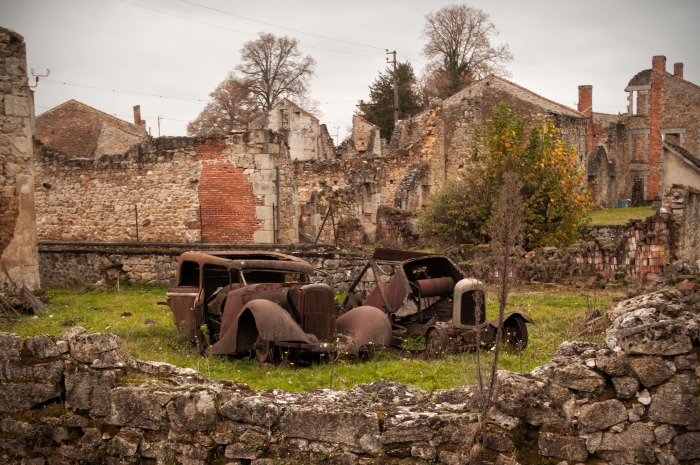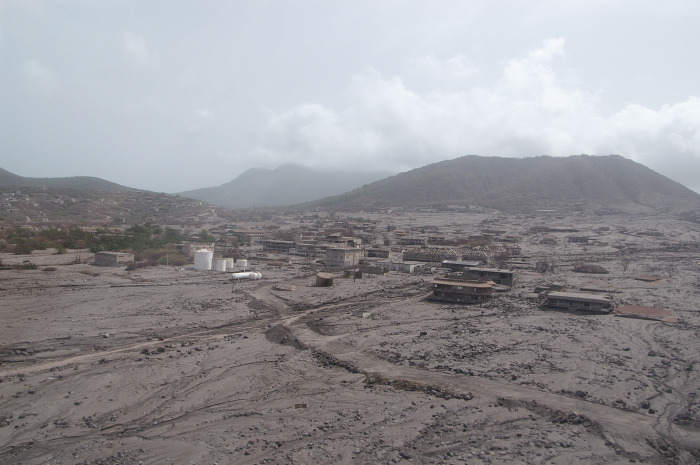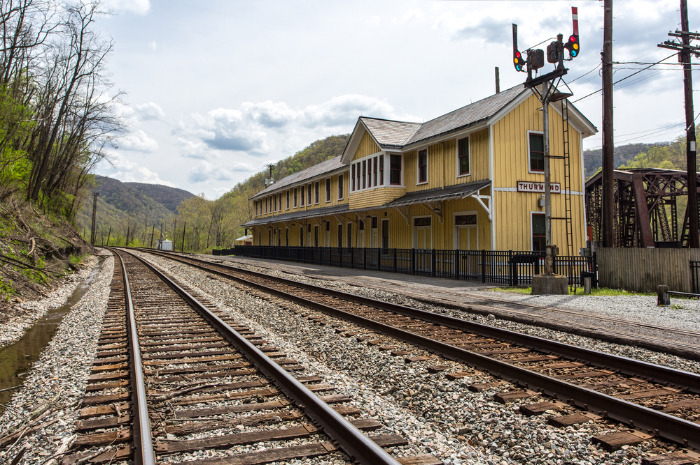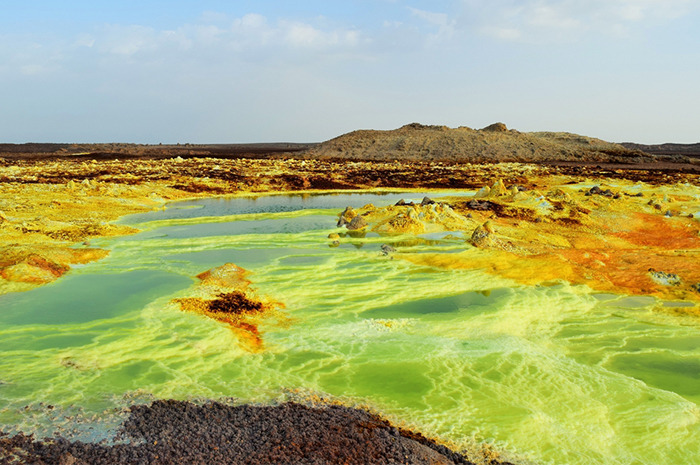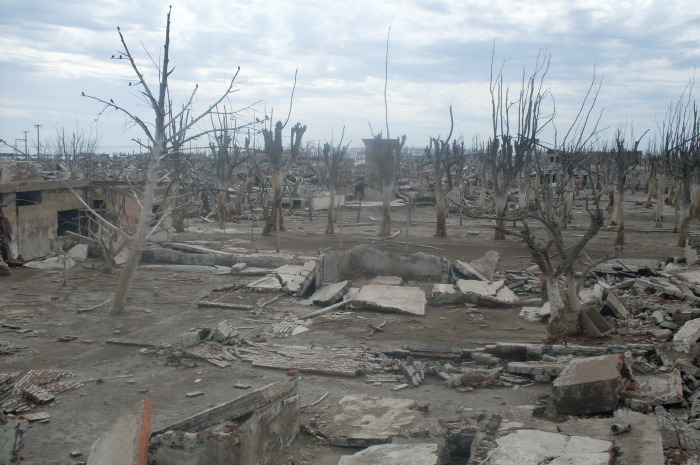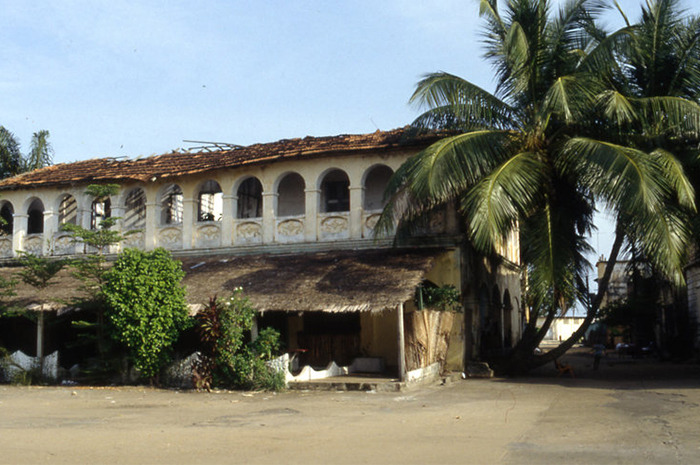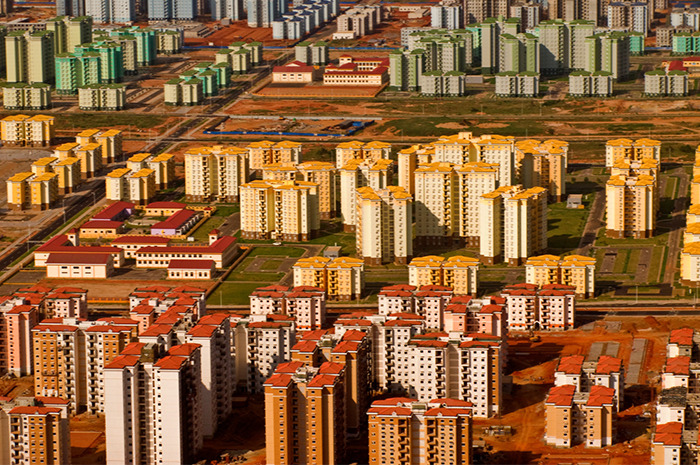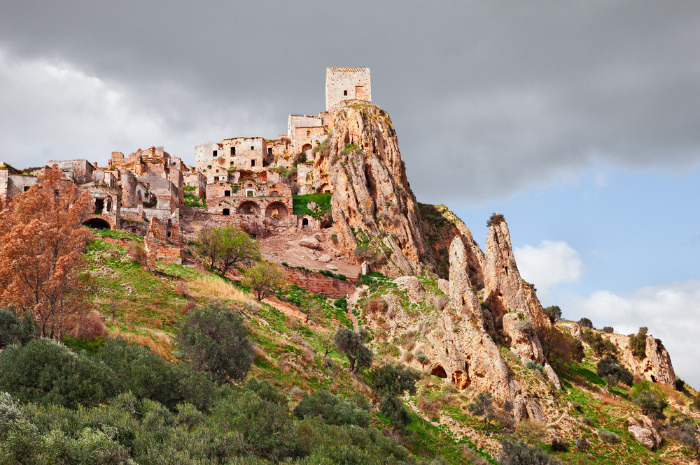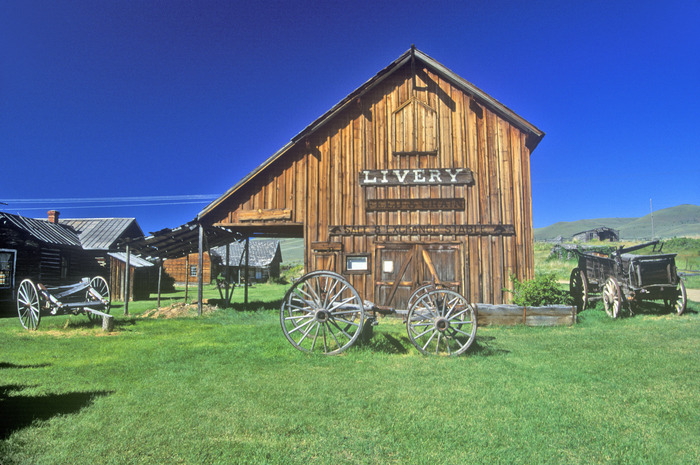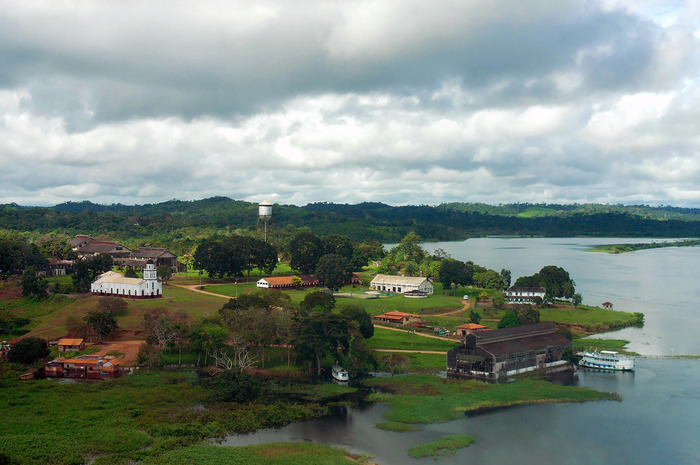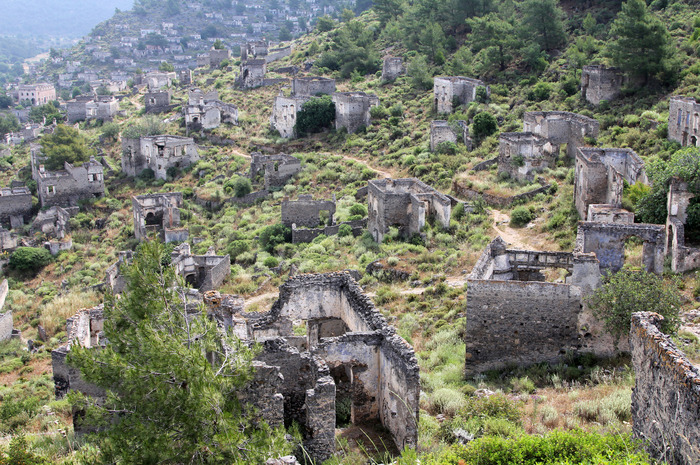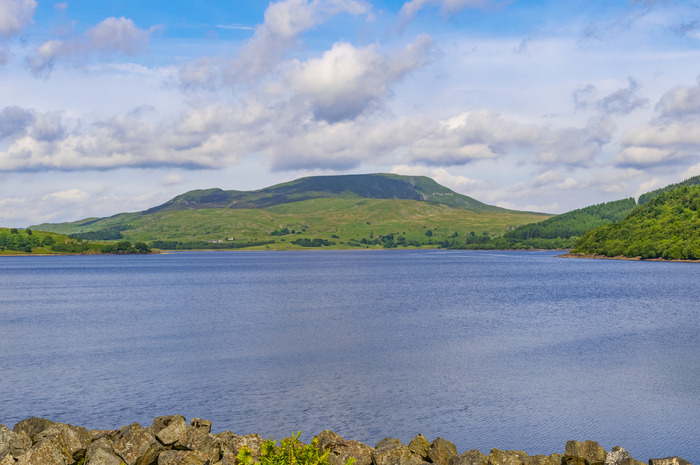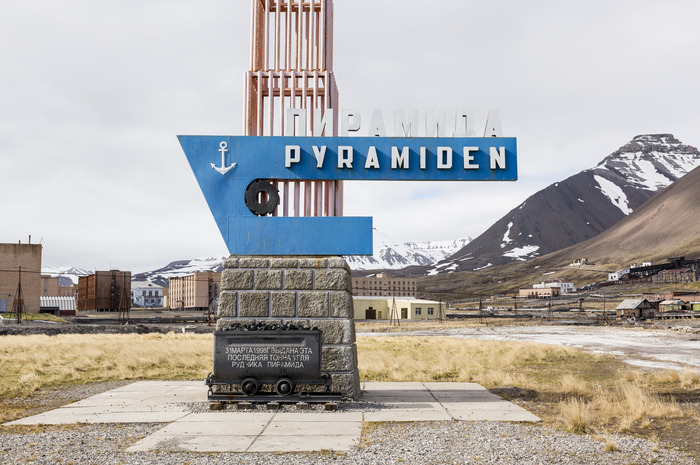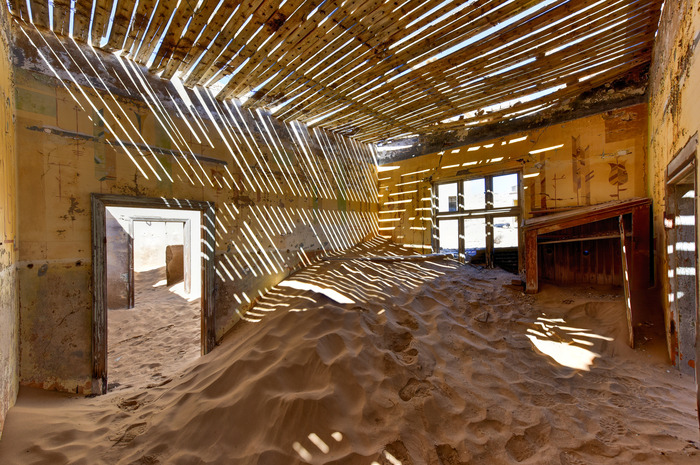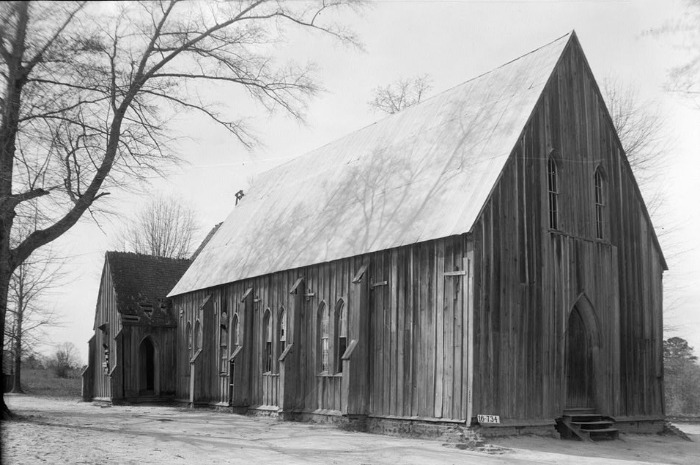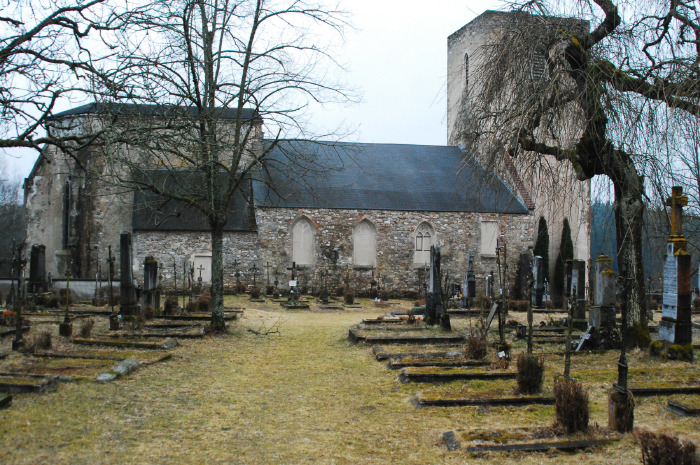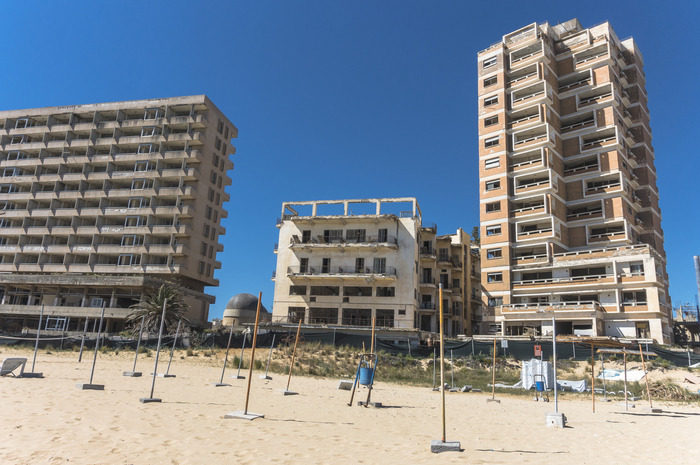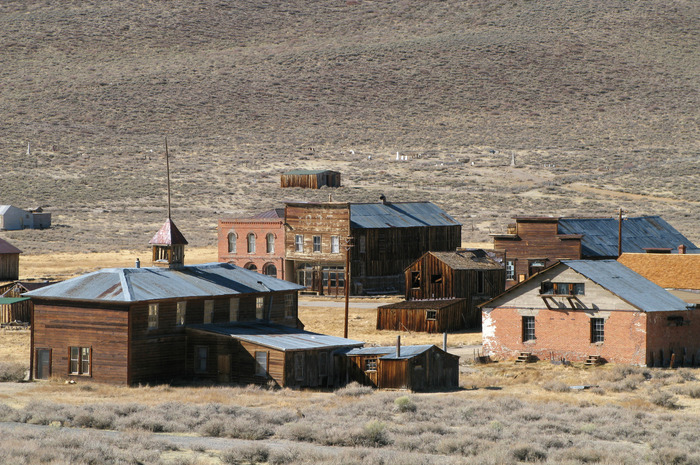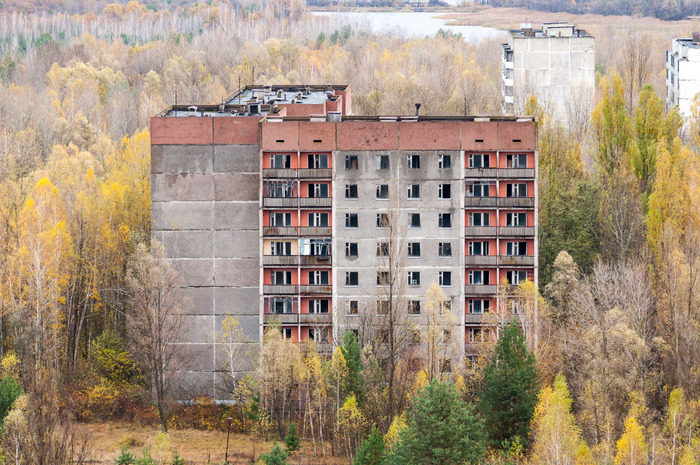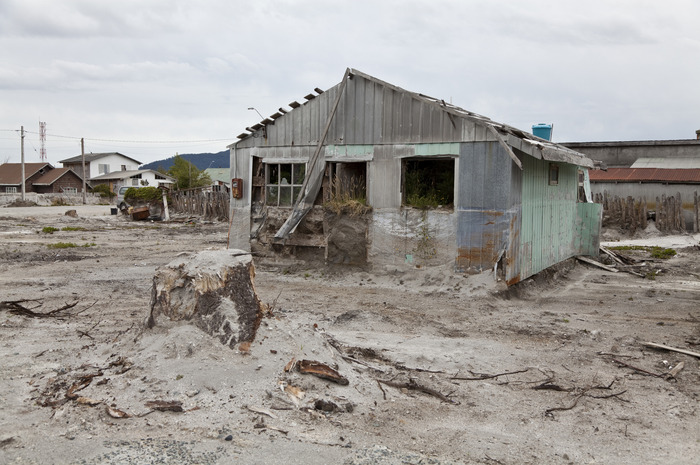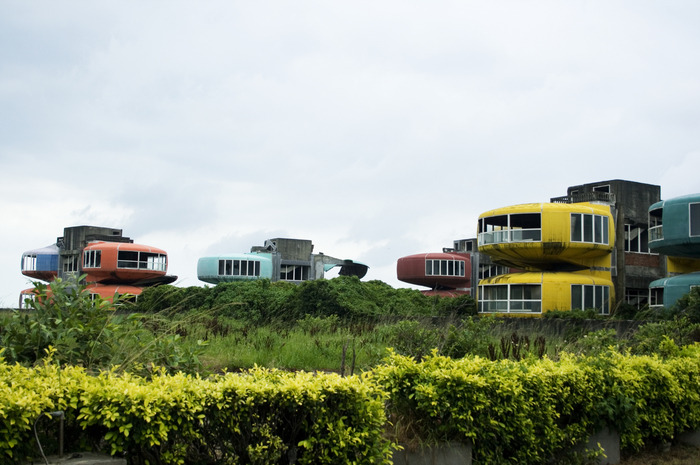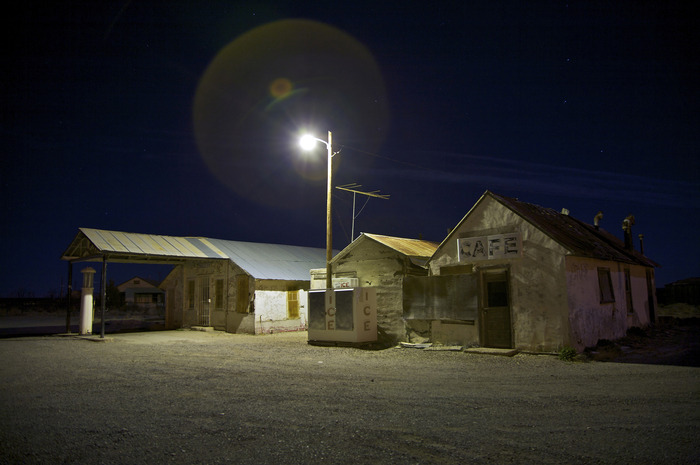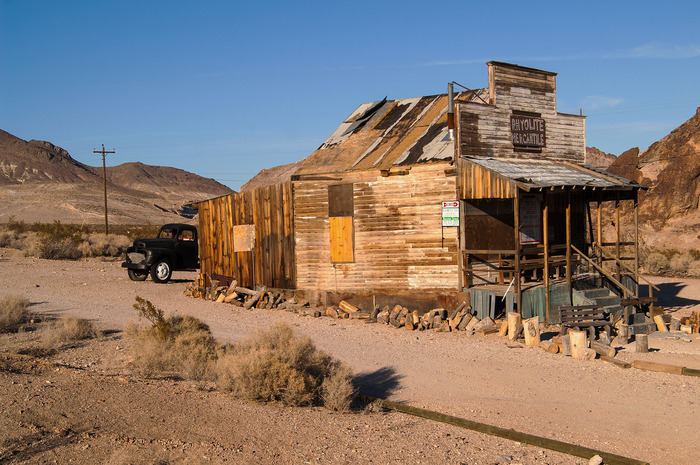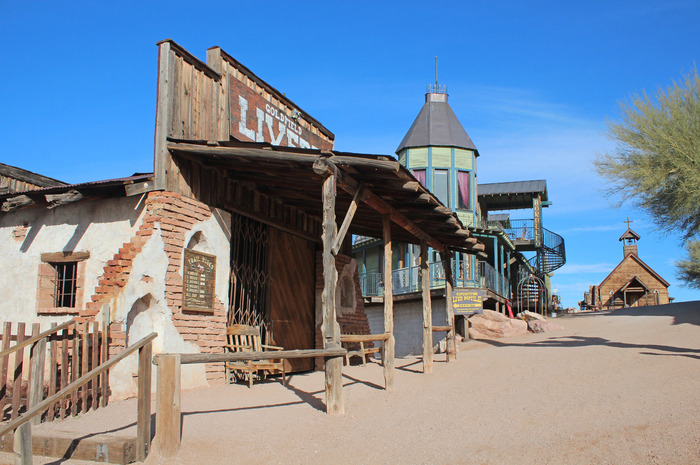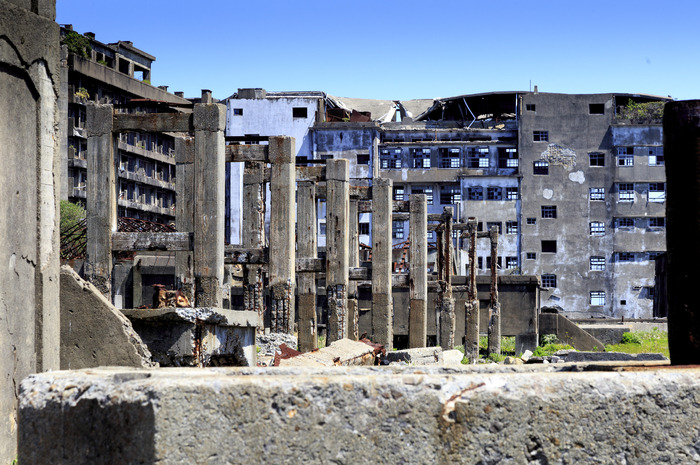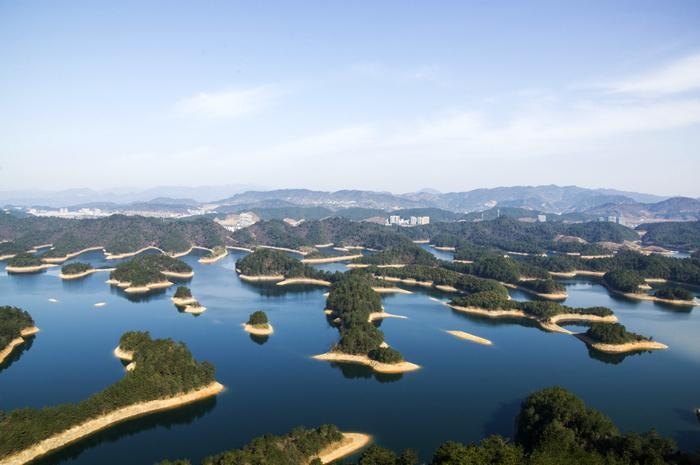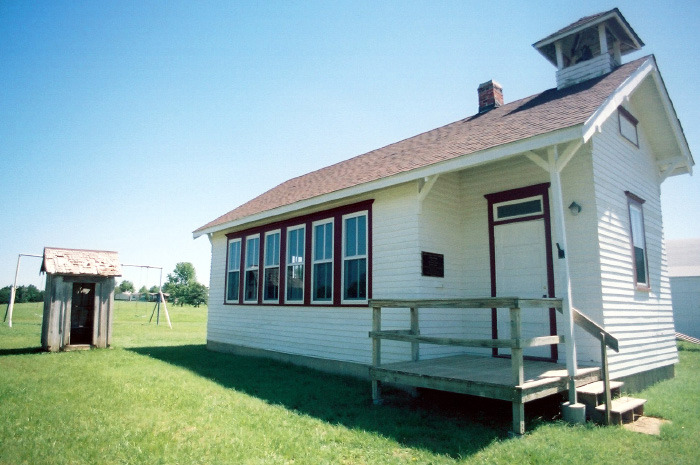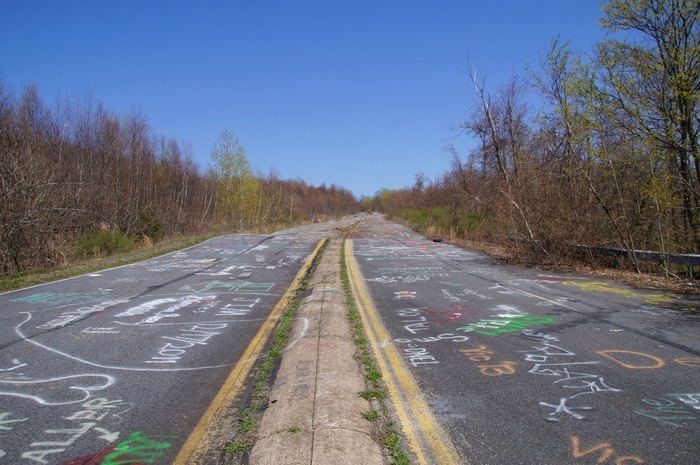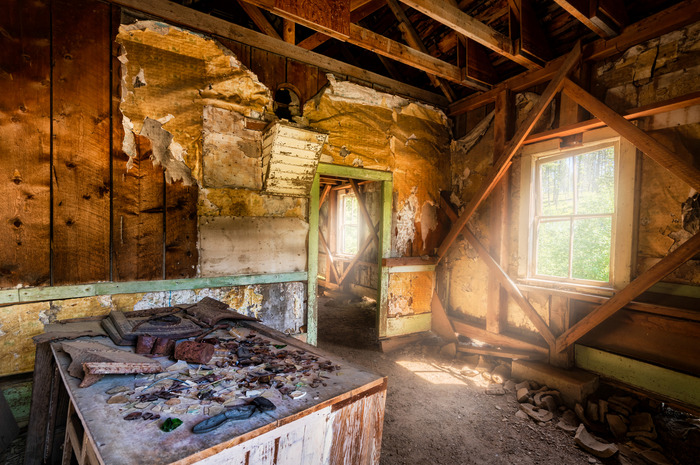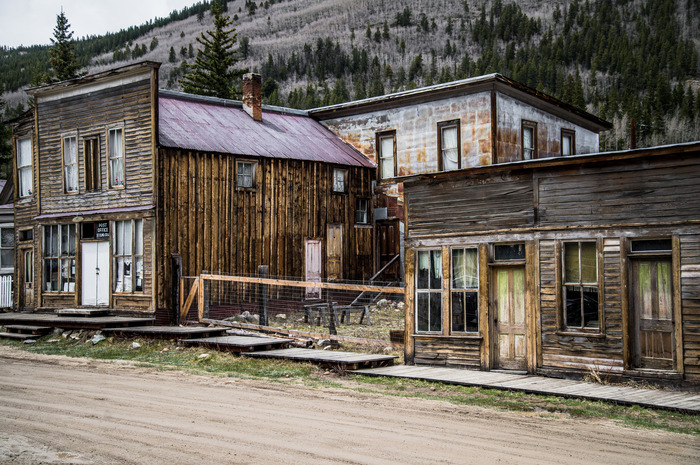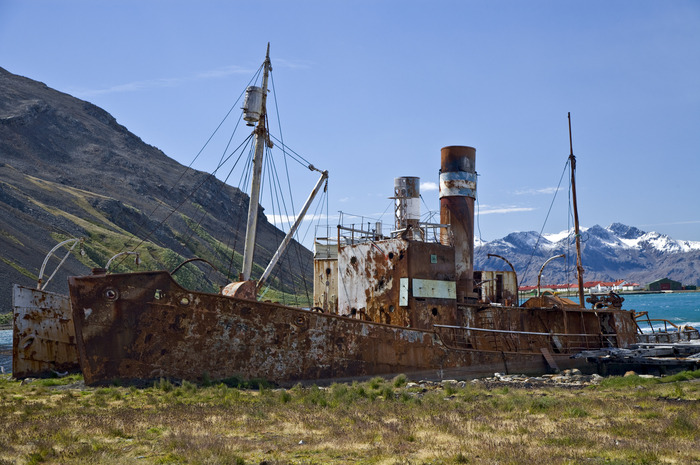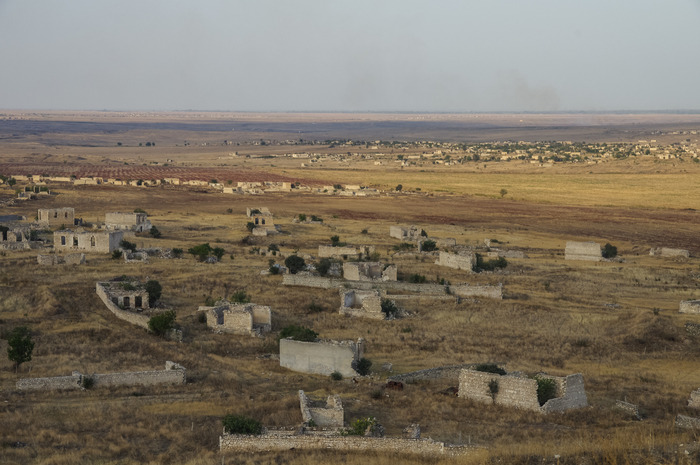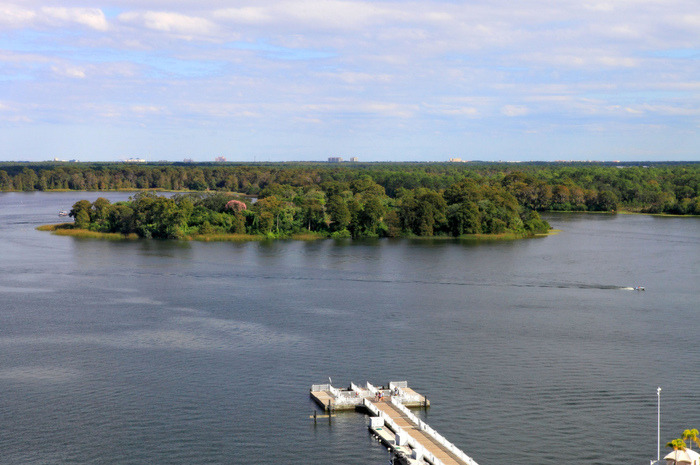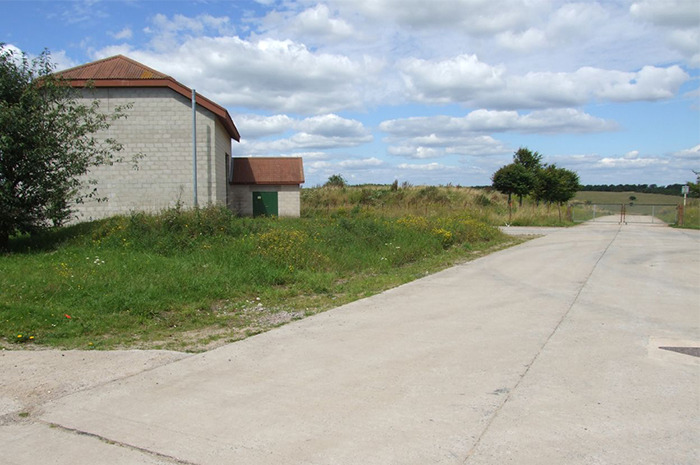Once-Popular Places That Are Now Almost Or Completely Abandoned
Do you ever wonder what the world would look like if humans were gone?
You don't have to imagine anymore. There are certain places — and some have been fairly well-documented — which show exactly what would happen.
Abandoned places can be ghastly and charming at the same time. They are now dusty, with cracks on the walls, shattered windows, and trees growing inside, but at one time hundreds of residents were living and working there. It's both nostalgic and intriguing.
Kennecott, Alaska
The National Park Service acquired many of the significant buildings and lands of this historic mining town. Listed on the National Register of Historic Places in 1978 and designated as a National Historic Landmark since 1986, Kennecott is considered the best remaining example of early-20th-century copper mining, according to NPS.
Oradour-sur-Glane, France
Oradour-sur-Glane was a small farming village. During World War Two, it was located in the German-occupied zone of France. On June 10, 1944, German troops killed 642 people, almost the entire population, and then destroyed the village, according to the U.S. Holocaust Memorial Museum. After the war, Oradour-sur-Glane became an iconic symbol of German crimes against civilians.
Plymouth, Montserrat, West Indies
Plymouth was the capital of Montserrat and the only port of entry until 1997 when volcanic eruptions destroyed much of the town and the island's most-spectacular vegetation, according to Encyclopedia Britannica. The town was abandoned in 1995–96.
Thurmond, West Virginia
It was a railroad town in its heyday in the 1920's. In 1995, with some historical restoration money in hand, the National Park Service gave the Thurmond Depot a makeover. Some of it was turned into a NPS visitor center and a museum. The station still functions as a working stop on Amtrak's Cardinal Line.
Dallol, Ethiopia
Dallol once was home to a thriving mining community. It is known as one of the hottest, driest, and lowest places on the planet – 380 feet below sea level. The average temperature there is 93 degrees Fahrenheit, the highest in the world. The fact that it barely rains – Dallol, one of the most remote places on Eart, only receives 100 to 200mm of rainfall per year – doesn't help. That's why what it remains is nothing more than a pile of rubble and rust.
Villa Epecuén, Argentina
The former tourist township was built on the shores of Lago Epecuén, a lake with therapeutic powers, which had about 5,000 people in the 1970's. A huge volume of water after a storm broke through the dam in 1985swamped much of the town, according to The Weather Channel. The flood was consuming the town for years until it was covered in more than 30 feet of salt water. It began was recede in 2009 and people can now see some of the ruins on the surface.
Grand-Bassam, Ivory Coast
It was French capital of Côte d'Ivoire. The colonial government abandoned the city in 1896, and Grand-Bassam's commercial dealings demised from that point onwards, according to Urban Ghost Media. By 1960 Grand-Bassam was all but a ghost town and has remained that way. Now it's a sightseeing attraction, and there has even been a spike in tourism.
Kilamba New City, Angola
Kilamba is the largest of several "satellite cities" being built by Chinese firms in Angola, according to news reports. But it has no residents, even though it was designed to house more than 500,000 people. Located in an isolated spot about 18 miles outside Angola's capital, Luanda, Nova Cidade de Kilamba is a mixed residential development of 750 apartment buildings, several schools and more than 100 retail units. Building the city cost about $3.5 billion.
Craco, Basilicata, Italy
People had lived in the hilltop village on the southern end of Italy in Basilicata, near the heel of the boot since the 10th century B.C. But now the town of Craco has stood uninhabited for half a century, according to Ancient Origins. "Here, dark windows look out at potential travelers like empty eye sockets and the streets and buildings of this medieval town seems to have literally been vacated overnight, left to crumble in decay."
Virginia City, Montana
It was booming during the gold rush of the mid-to-late 1800s. It used to be the 'Social City' of the Montana frontier. Today, tourists can still pan for gold, take stagecoach rides, ghost tours, train rides, firetruck tours and see an old time play, according to Visit Montana.
Fordlândia, Brazil
The uninhibited city is now more famous as the failure of Henry Ford's utopian city in the Amazon. In 1927 Ford wanted his own supply of rubber and he thought he could make it happen by founding a plantation and a factory town in the jungle. But heavy rains that washed out the nutrient-rich soil needed for growing the rubber trees. Drought and diseases during the dry season were also a huge problem. Workers were forced to eat Midwestern-style diet which they couldn't stomach. Fordlandia remains abandoned.
Kayaköy, Turkey
This is the country's religious ghost town. Until the deportations of 1923 of Christians and Greek Muslims, Muslims and Christians lived in peace there since the 14th century. Formerly known as Levissi, Kayakoy was a flourishing community of some 10,000 until the early 1920's, according to the BBC. Muslim farmers exiled from Greece went to Kayakoy but left soon after.
Capel Celyn, Wales
Capel Celyn was flooded to create a reservoir to provide a water supply to Liverpool a little more than half a century ago. It was one of the last Welsh-speaking settlements. The post office, school, chapel, cemetery, and 12 farms were all submerged. About 800 acres of land were lost.
Pyramiden, Norway
This is an abandoned Soviet era mining settlement in Svalbard, an archipelago between Norway and the North Pole. What is so creepy about the place is that everything still looks like the nearly 1,200 people living there just left overnight, as if they suddenly stopped what they were doing and took off. Nature has taken over and wild animals such as polar bears are wandering around. The settlement is now only reachable by boat from May until about October.
Kolmanskop, Namibia
Often referred to as Namibia's Ghost Town, Kolmanskop was once the site of a diamond rush and a bustling city for German miners, according to Naminibian.org. Eventually, it peaked and saw its decline after World War I when inhabitants left in search of new diamond deposits. Many of the buildings still stand, but much of the city has been claimed by sand. It gives off eerie vibes that attract curious souls — including ghost hunters — from all over the world.
Cahaba, Alabama
The state's famous ghost town is located in Dallas County, just outside of Selma. It was Alabama's capital from 1820 to 1826. Explore the Old Cahawba Archeological Park, which is most beautiful in the fall, to see abandoned buildings from back in the day that have been preserved.
Döllersheim, Austria
This small village is almost a thousand years old. It was evacuated on Adolf Hitler's orders to make place for a Wehrmacht military training area in 1938 right after Anschluss which annexed Austria to Nazi Germany. An interesting fact is that his grandmother, his father's mom, was buried there.
Varosha, Cyprus
The formerly booming tourist resort for the rich and famous is now just miles of sand where it's only you and nature; dozens of grand hotels stand empty. Forty years ago, after years of inter-ethnic violence culminating in a coup inspired by Greece's ruling military junta, Turkey invaded Cyprus and occupied the northern third of the island, according to the BBC. As troops approached, residents fled and never came back.
Bodie, California
Bodie is described as "a town frozen in time in a state of arrested decay." It was found in 1859 and people came for the gold. When they didn't find as much as they were hoping, people left. The town is now a State Historic Park. Most of the ghost town has remained untouched. Tourists can walk down the deserted streets and feel as if they're in an episode of Westworld.
Pripyat, Ukraine
This is probably the most famous abandoned place in the world. The Ukraine city of Pripyat was home to 49,000 residents until it was evacuated and abandoned following the Chernobyl disaster in 1986. Although the area remains abandoned, it's been deemed safe to visit and some outfitters there offer guided tours of the site.
Chaitén, Chile
The small community in the Los Lagos Region was devastated by a pyroclastic mudflow, after a volcanic eruption caused the Blanco River to burst its banks and forge a destructive new path through the town. On May 2, 2008 the vast caldera of the Chaitén volcano, two miles in diameter, became active. The volcano spewed a toxic plume of ash and sulfurous steam 19 miles into the atmosphere, which drifted across Patagonia.
San Zhi, Taiwan
The UFO-looking houses were meant to comprise a seaside resort, but the settlement was left abandoned in 1980 before it even opened after several mysterious events including suicides. It is now an underground tourist attraction, mostly due to paranormal rumors.
Orla, Texas
The town started as a section house for the Pecos River Railroad in 1890. Businesses in town doubled during WWII – to two, according to Texas Escapes. The town continued to "swell" to 40 and then 60 people. In the mid-1960s Orla was an established oil supply center and the population reached about 250. Nowadays, it remains an equipment shipping point.
Rhyolite, Nevada
The ghost town once had more than 10,000 residents. They had an active social life including baseball games, dances, whist parties, a symphony, basketball games, and weekend nightlife, according to NPS. The financial panic of 1907 was the beginning of the end for the town. There are several remnants of Rhyolite's best days; some of the walls of the three-story bank building are still standing, as is part of the old jail. The train depot and the bottle house are two of the few complete buildings left in the town.
Goldfield, Arizona
Located atop a small hill between the Superstition Mountains and the Goldfield Mountains, the settlement got its start in 1892 when very rich, high grade gold ore was found in the area. For five years the town boomed until some 1,500 people were residing in the expanding city. Its best days were dashed when the vein of gold ore started to play out. Just five years after it began, the town began quickly dying.
Hashima Island, Japan
Hashima Island is one of more than 500 unpopulated islands in Nagasaki Prefecture, standing at 40 square miles in size. It was home to a major coal mining operation managed by Mitsubishi until 1974. It was actually one of the most densely populated places in world history with 83,500 people per square kilometer at its peak. The island is also known as "Battleship Island," named after its external appearance.
Lion City, China
The ancient flooded city that lies at the foot of Wu Shi Mountain (Five Lion Mountain) is now just about 80-130 feet beneath the Qiandao Lake (Thousand Island Lake) in China. Officials have taken a renewed interest in it because it has remained completely intact despite being underwater for half a century. The Lion City was built during the Eastern Han Dynasty (25 – 200 AD) and it was the center of politics and economics. But in 1959, the government decided a new hydroelectric power station was required. A man-made lake was build and Shi Cheng was submerged.
Elk Falls, Kansas
This is the "world's largest living ghost town" and the ""Outhouse Capitol of the World," according to Kansas Travel. Its population is fewer than 200 people. The biggest attraction is The Falls the community is named after; it is at the edge of town, just upriver from the 1893 Iron Truss Bridge. The best time to visit is in May.
Centralia, Pennsylvania
This is a near-ghost town in Columbia County. The place is known for its underground mine fire that has been ongoing since 1962. Touch the ground and you'll see that it's still warm, even in the winter. Only a handful of residents still live in this once-prosperous mining town. Poisonous smoke seeps up from the ground, killing any sign of plant life on the surface. The deadly carbon monoxide led has left nothing but a barren wilderness.
Garnet, Montana
About a century ago Garnet was a thriving town, filled with gold miners. In 1898 around 1,000 people lived there. Garnet is now Montana's most intact ghost town, hidden high in the Garnet Mountain Range east of Missoula. By 1905, many of the mines were abandoned and the town's population had shrunk to about 150. A fire in 1912 destroyed many commercial buildings, and most remaining residents moved away. By the 1940's, Garnet was a ghost town.
St. Elmo, Colorado
St. Elmo was originally settled in 1878. People were going after for the gold and silver that were abundant in the area. The failure of numerous mines and the closure of the Alpine Tunnel in 1910 started the decline of St. Elmo, according to Legends of America. In 2002, a fire destroyed six of the buildings, including the old town hall and jail and several dwellings.
Grytviken, South Georgia
The long forgotten whaling station was founded in 1904 by Norwegian sea captain Carl Anton Larsen. It was serviced by 300 men during its prime. The station shut down in 1966 when whale stocks declined to very low numbers, leaving Grytviken a haunting uninhibited town. A few residents live at a British Antarctic Survey Research Station at nearby King Edward Point.
Agdam, Azerbaijan
A war after the fall of the Soviet Union between Armenian autonomous nation Nagorno-Karabakh Republic and Azerbaijan led to abandonment of Agdam, a city founded in the 18th century, which was basically a battlefield. Its entire population fled East in 1993. Later the town was looted for construction materials. The only building still standing is the mosque.
Discovery Island, Florida
Located in the middle of Bay Lake, Discovery Island, which is owned by Walt Disney World, has a long history going as far as the early-1900s, according to Abandoned Florida. The land was used for farming until the 1930s, later as the new landscape for Disney's new attraction, Treasure Island; then it was a zoological park. Disney closed the park in 1999.
Copehill Down, Wiltshire, England
Copehill Down is actually a mock village built by the British army as a copy of a German village at the end of the Cold War to practice their urban warfare skills and close quarters fighting, according to Amusing Planet. Called a "FIBUA" (Fighting In Built-Up Areas) village, Copehill Down is just one of the handful of villages scattered around the country.
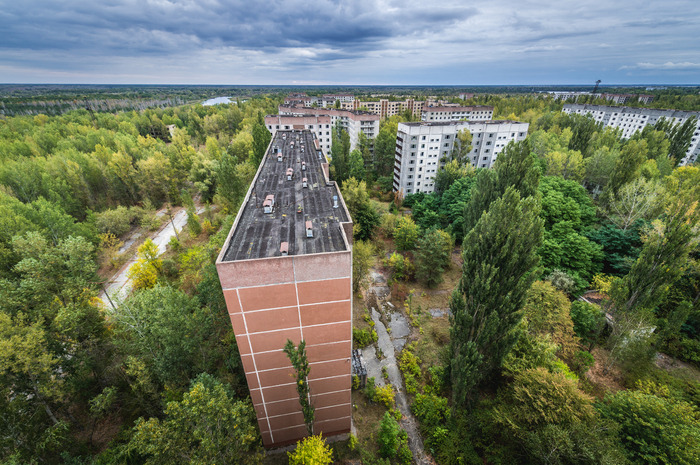
_edit.jpg)
